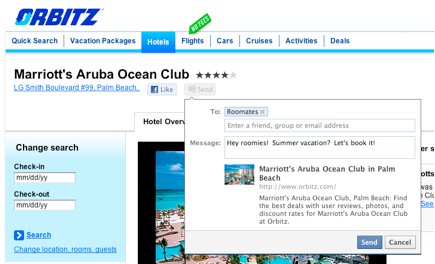On the first anniversary of Facebook’s now ubiquitous Like button, Facebook have introduced a new Send button. The Send button essentially brings context to the Like button, allowing users to share content with specific groups of people on Facebook.

Facebook introduced the new version of Groups in October 2010 with 50 million such groups created since then. Groups are subsets of Facebook users allowing them to interact on common levels of increased relevance.
The new Share button can be embedded on any website, just as the Like button currently is on 2.5 million websites, and allows users to share content by email, Facebook Message, or to specific and relevant Groups on Facebook.
The button launches today on fifty partnered sites but will likely be made available universally shortly. Software engineer Elliot Lynde explains on the Facebook blog,
“A year ago, we launched the Like button, which gives you a quick way to share the things you find on the web with all your friends. But there are times when you find something that you only want to share with a few specific people.
“Say you’re on Orbitz and want to tell your roommates about a great idea for a summer vacation, or you come across a Huffington Post article that you only want to share with people at work. With the new Send button, now you can share things with any of your Groups or individual friends on Facebook.”
I believe Facebook is focusing more on user friendliness and to make things private within community & friends, and I think this would eventually out burden “Share”& “like” buttons as well. However, this move by Facebook could be in response to the latest Google+1 service launched by Google.
I believe Facebook is focusing more on user friendliness and to make things private within community & friends, and I think this would eventually out burden “Share”& “like” buttons as well. However, this move by Facebook could be in response to the latest Google+1 service launched by Google.
@Promotional products It also prevents Facebook users from “spamming” certain friends with content only relevant to a subset
@Promotional products It also prevents Facebook users from “spamming” certain friends with content only relevant to a subset